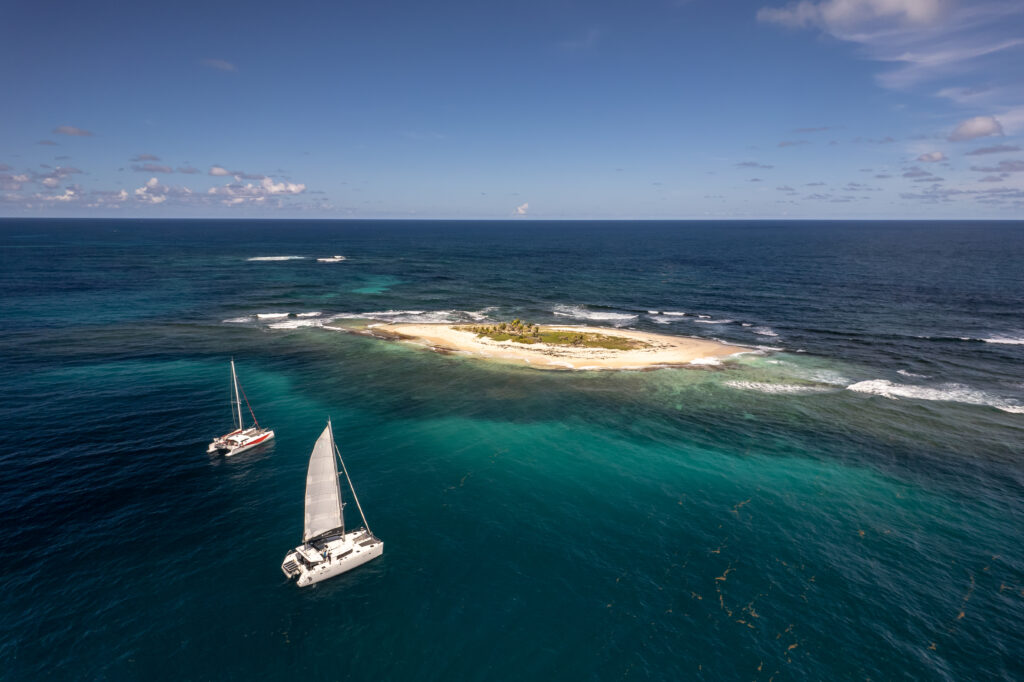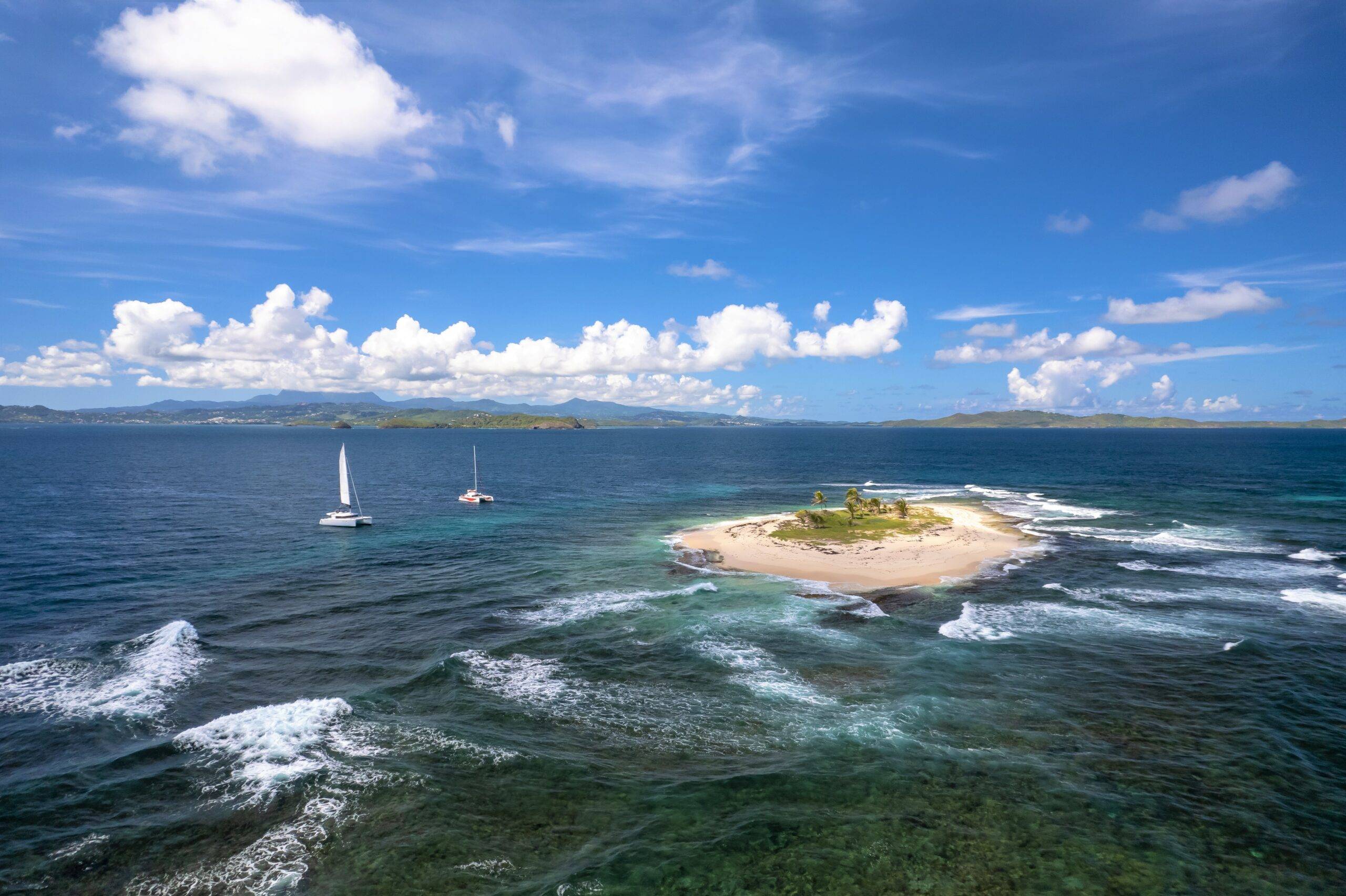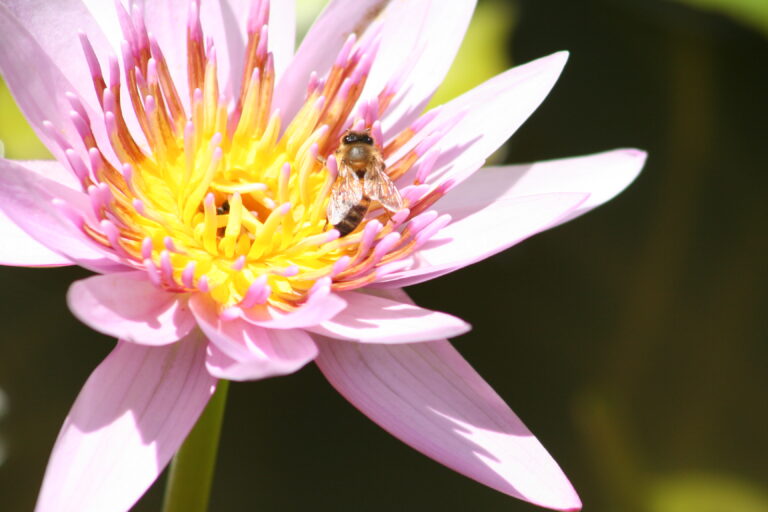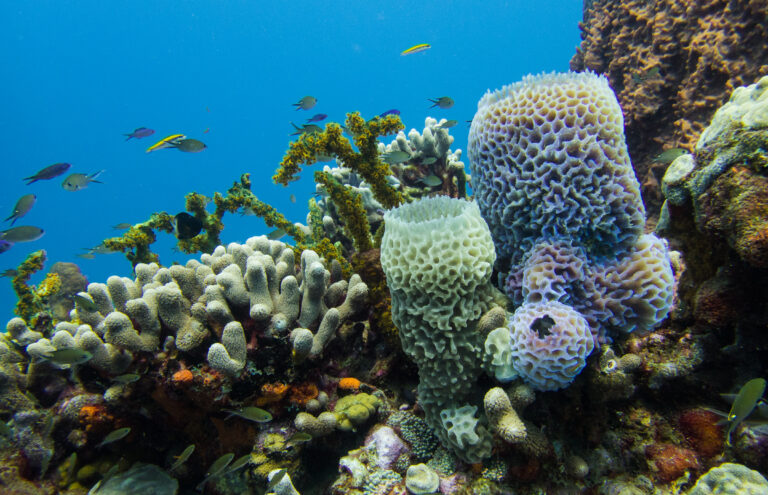Quels sont les îlets protégés en Martinique ?
On ne dirait pas comme ça, mais ce sont près de 50 îlets – 48 très exactement ! – qui baignent dans les eaux martiniquaises. Vous vous voyez déjà y accoster ou même, y séjourner à la façon d’un Robinson Crusoé ? Pas si vite car certains d’entre-eux sont des îlets protégés par un arrêté de protection du biotope ou bénéficient du statut de réserve naturelle nationale. Nous vous expliquons en quoi consistent ces réglementations et quel comportement adopter lors de vos prochaines excursions en bateau en Martinique.
Quels sont les îlets en Martinique ?
Que ce soit sur la côte Caraïbe ou sur la côte Atlantique, d’innombrables petits bouts de terres sortent des eaux martiniquaises et invitent à la balade. Ces îlets, vous les apercevrez forcément lors d’une excursion en bateau et même depuis la terre ferme. Le fameux rocher du Diamant par exemple ? Il s’agit d’un îlet !
Avant de jeter l’ancre et de débarquer sur un îlet protégé, voyons quels sont les différents îlets de Martinique et quels sont leur statut de protection :
- Au Prêcheur
- L’îlet La Perle, que l’on aperçoit notamment depuis la belle plage de sable noir d’Anse Couleuvre
- Aux Trois-Ilets
- Le trio îlet Charles, îlet Sixtain et îlet Tébloux, qui ont donné leur nom à la ville des Trois-Ilets
- Gros îlet
- L’îlet à Ramiers, îlet protégé par un arrêté de protection de biotope
- Au Diamant
- Le rocher du Diamant, superbe spot de plongée sous-marine, îlet protégé par un arrêté de protection de biotope
- L’îlet du Céron
- Au Marin
- L’îlet Duquesnay
- L’îlet Baude
- Petit îlet Duprey
- À Sainte-Anne
- La Table du Diable, imposant bloc de roches volcaniques et l’îlet Cabrits, surmonté d’un phare, qui se trouvent en face de l’Anse à Prunes à quelques minutes de la plage des Salines
- L’îlet à Toiroux, l’îlet à aigrettes et les îlets Burgaux, Poirier, Percé et Hardy (tous les 4 classés Réserve naturelle nationale), au niveau de l’Anse Trabaud sur la trace des caps
- L’îlet Chevalier, l’îlet rat et l’îlet aux chiens du côté de Cap Chevalier et d’Anse Michel
- Au Vauclin
- L’îlet Petite Grenade, tout proche de la jolie plage de Trou Cochon
- Au François
- L’îlet Frégate, îlet protégé par un arrêté de protection de biotope
- L’îlet Long, îlet protégé par un arrêté de protection de biotope
- L’îlet Pelé
- L’îlet Métrente
- L’îlet Thierry et l’îlet Oscar, îlets protégés par un arrêté de protection de biotope, qui entourent la baignoire de Joséphine, ce haut fonds dans lequel on peut barboter en pleine mer
- L’îlet Lavigne, îlet protégé par un arrêté de protection de biotope
- L’îlet Lapins
- Au Robert
- L’îlet Madame, protégé par un arrêté de protection de biotope. Aménagé et disposant d’un ponton, il est idéal pour pique-niquer, faire une petite balade sur son sentier et se baigner.
- L’îlet Boisseau, protégé par un arrêté de protection de biotope
- L’îlet Loup Garou, un petit banc de sable en pleine mer, protégé par un arrêté de protection de biotope
- L’îlet Chancel et sa colonie d’iguanes des petites Antilles, qui est le plus grand îlet de la Martinique, protégé par un arrêté de protection de biotope
- L’îlet Petite Martinique, protégé par un arrêté de protection de biotope
- L’îlet Petit Vincent, relié à la côte par une mangrove, protégé par un arrêté de protection de biotope
- L’îlet La Grotte, protégé par un arrêté de protection de biotope
- L’îlet Petit Piton
- L’îlet à eau
- À Trinité
- Autour de la presqu’île de la Caravelle, classée réserve naturelle nationale : l’îlet du Galion, l’îlet du Trésor, le Rocher de la Caravelle, l’îlet Lapin, l’îlet Tartane
- À Sainte-Marie
- L’îlet Saint-Aubin
- L’îlet Sainte-Marie, protégé par un arrêté de protection de biotope, qui possède un Tombolo permettant de traverser la mer à sec à certaines périodes de l’année !
Quelle est la réglementation des îlets protégés de Martinique ?
Certains îlets de Martinique sont donc protégés par deux statuts, l’arrêté de protection de biotope et la réserve naturelle nationale.
Qu’est-ce qu’un arrêté de protection de biotope ?
Un arrêté de protection de biotope a pour objectif de conserver l’habitat d’espèces animales ou végétales protégées. Il s’agit donc de limiter l’activité humaine afin de permettre aux espèces sauvages de s’alimenter, de se reproduire et de se reposer sur le territoire en question.
Peut-on visiter un îlet protégé par un arrêté de protection de biotope ?
Difficile de répondre par oui ou par non. La réglementation liée à un arrêté de protection de biotope n’est en réalité pas fixe et diffère selon le territoire considéré.
L’îlet Loup Garou, par exemple, ne peut être visité qu’en dehors de la période de reproduction des Bécasseaux Sanderling et Minuscule et du Tournepierre à collier, des oiseaux migrateurs séjournant sur l’îlet de septembre à décembre.
Cependant, ne vous réjouissez pas trop vite car en dehors de cette période, l’activité autorisée sur l’îlet reste très limitée : construction, rejet de déchets, extraction et prélèvement de végétaux, nuisance sonore, chasse, survol, camping et feux interdits ! Il faut par ailleurs savoir qu’il est très difficile d’y accoster en raison des vagues et courants. Le mieux reste de l’admirer de loin 😉

L’îlet Chancel, qui permet de découvrir les iguanes des petites Antilles (espèce endémique), se prélassant sur les branches de palétuviers et autres mancenilliers, ainsi que les ruines d’une ancienne usine sucrière, est lui aussi protégé, mais peut être visité toute l’année tant que vous ne sortez pas des zones autorisées. Les eaux calmes bordant l’île permettent de facilement jeter l’ancre, à condition d’éviter les herbiers bien sûr !
En ce qui concerne le Rocher du Diamant, l’accès y est complètement interdit afin de protéger sa population avifaune, c’est-à-dire d’oiseaux. À défaut de pouvoir le visiter par la terre, vous pourrez cependant découvrir ses fonds marins exceptionnels et notamment son impressionnante faille sous-marine en plongée ou en snorkeling.
Qu’est-ce qu’une réserve naturelle nationale ?
Une réserve naturelle est, comme un espace protégé par un arrêté de protection de biotope, un territoire préservé afin de protéger sa biodiversité et ses écosystèmes. Les réserves naturelles sont cependant beaucoup plus réglementées. C’est simple, il est strictement interdit d’y accéder. Même lors de la navigation, il est obligatoire de se tenir à bonne distance des îlets, à 50 mètres du littoral plus précisément.
En Martinique, il existe deux ensembles d’îlets au statut de réserve naturelle nationale, la réserve naturelle de la presqu’île de la Caravelle, gérée par le Parc Naturel Régional de la Martinique (PNRM) et la réserve naturelle des îlets de Sainte-Anne, gérée conjointement par le PNRM et l’Office National des Forêts (ONF). Ces deux ensembles sont de véritables réserves de biodiversité floristique et faunistique, et notamment d’avifaune… à observer de loin comme vous l’aurez compris.
Vous savez maintenant tout sur les îlets protégés de Martinique. Bonnes balades nautiques en Martinique !
Article rédigé par : Axelle DORVILLE



